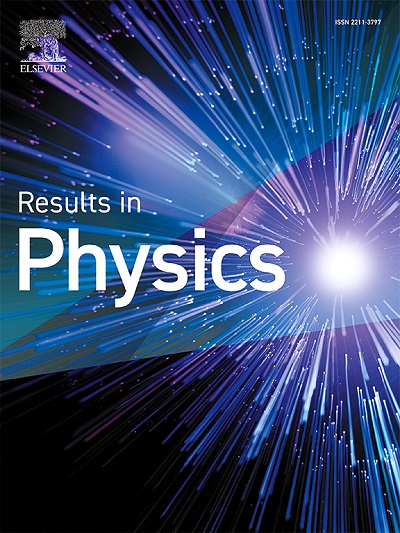一种寻找均匀液滴产生的层流射流破裂中瑞利-高原不稳定最佳频率的新数值方法
IF 4.6
2区 物理与天体物理
Q2 MATERIALS SCIENCE, MULTIDISCIPLINARY
引用次数: 0
摘要
研究瑞利高原不稳定性和层流射流破裂的关键问题之一是确定最佳扰动波长。通过在层流射流中诱导具有最佳频率或波长的人工扰动,可以产生均匀大小的液滴。现有的计算瑞利-高原不稳定性的最佳波长的方法大多依赖于简化的解析方法,导致各种局限性。本研究的主要目的是建立一种有效的数值方法来确定瑞利-高原不稳定的最佳频率。首先,用实验数据对数值结果进行了验证。然后,提出了一种利用模拟数据和离散傅里叶变换(DFT)计算最优频率的系统方法。该方法可以替代常用的试错法和不准确的分析方法,提供低成本和高精度的最佳频率预测。应用该方法确定了不同流量条件下的最优频率(webwe =6;0.013≤Ohnesorge(Oh)<0.219)。最后,考察了内外径比(b=DI/DO)和接触角对最优频率的影响。结果表明,增大b可使最优频率提高70%。另外,当接触角从30°增加到120°时,最佳频率从160Hz提高到192Hz,此时Oh=0.013, b=0.56。本文章由计算机程序翻译,如有差异,请以英文原文为准。

A novel numerical approach to find the optimal frequency of Rayleigh–Plateau instability in laminar jet breakup for uniform droplet generation
One of the key aspects of studying Rayleigh-Plateau instability and laminar jet breakup is identifying the optimal disturbance wavelength. By inducing artificial disturbances with an optimal frequency or wavelength in a laminar jet, uniformly sized droplets can be produced. Most existing methods for calculating the optimal wavelength in Rayleigh-Plateau instability rely on analytical approaches with significant simplifications, leading to various limitations. The main goal of this study is to develop an effective numerical method to identify the optimal frequency in Rayleigh-Plateau instability. First, the numerical results are validated with experimental data. Then, a systematic method for calculating the optimal frequency using simulated data and the discrete Fourier transform (DFT) is proposed. This method serves as an alternative to common trial-and-error methods and inaccurate analytical approaches, providing a low-cost and highly accurate prediction of the optimal frequency. This method is applied to determine the optimal frequency for different flow conditions (). Finally, the impact of two parameters, including the inner to outer diameter ratio () and the contact angle, on the optimal frequency is examined. The results show that increasing can increase the optimal frequency by up to 70 %. Additionally, increasing the contact angle from to raises the optimal frequency from to while and .
求助全文
通过发布文献求助,成功后即可免费获取论文全文。
去求助
来源期刊

Results in Physics
MATERIALS SCIENCE, MULTIDISCIPLINARYPHYSIC-PHYSICS, MULTIDISCIPLINARY
CiteScore
8.70
自引率
9.40%
发文量
754
审稿时长
50 days
期刊介绍:
Results in Physics is an open access journal offering authors the opportunity to publish in all fundamental and interdisciplinary areas of physics, materials science, and applied physics. Papers of a theoretical, computational, and experimental nature are all welcome. Results in Physics accepts papers that are scientifically sound, technically correct and provide valuable new knowledge to the physics community. Topics such as three-dimensional flow and magnetohydrodynamics are not within the scope of Results in Physics.
Results in Physics welcomes three types of papers:
1. Full research papers
2. Microarticles: very short papers, no longer than two pages. They may consist of a single, but well-described piece of information, such as:
- Data and/or a plot plus a description
- Description of a new method or instrumentation
- Negative results
- Concept or design study
3. Letters to the Editor: Letters discussing a recent article published in Results in Physics are welcome. These are objective, constructive, or educational critiques of papers published in Results in Physics. Accepted letters will be sent to the author of the original paper for a response. Each letter and response is published together. Letters should be received within 8 weeks of the article''s publication. They should not exceed 750 words of text and 10 references.
 求助内容:
求助内容: 应助结果提醒方式:
应助结果提醒方式:


